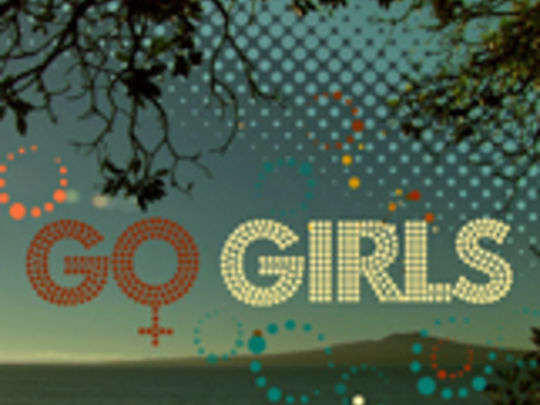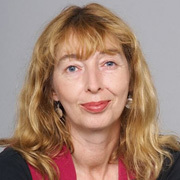
Go Girls
Television, 2009–2013
Go Girls - A Quest Mixed with a Fairytale
Go Girls started life from various musings. One of them was: what would Sex and the City be like if it was set in New Zealand, not New York?
The idea made me laugh, but it also made me think about how ordinary chicks in New Zealand have as many dreams and aspirations as Carrie and co — and why couldn’t they wear great outfits as well?
It became a quest idea, mixed with a fairy tale — three girls with ambitions to be rich, famous and married — in 365 days. But [fellow co-creator] Gavin Strawhan suggested that it shouldn’t all be about girls, and perhaps it should be told by their other best friend, Kevin. At the time, there were various American shows on TV with smug female narrators, and the idea of having an inarticulate bloke tell the story was comedy gold.
We started writing with some other writers, including Kate McDermott, who is very talented, and was also a lot closer in age to our 25-year-old heroines. Kate went on to be showrunner [the person given ongoing creative control of storylines], and wrote many of the funniest scripts.
Go Girls was seen as kind of a step-up show — for a lot of people. Aspiring crew got to step up to be heads of department; like our director of photography DJ Stipsen (The Golden Hour, Harry) and makeup head Danelle Satherley (Boy, Nothing Trivial). It was also a chance for some Shortland Street directors to branch out into one-hour television.
Gavin and I felt we'd need a producer with directing skills for this bold new enterprise. And Gavin had worked with director Chris Bailey on another show, and suggested he might be good. Fortunately, Chris said a cheerful yes and remained unflaggingly positive throughout all of season one. Which was no mean feat. New shows are always hard, but season one of Go Girls was particularly tough.
This light, bright, breezy show is set over a year on Auckland’s sunny North Shore. But we were shooting in winter — a winter where it rained almost constantly. The crew were miserable; our poor cast froze on beaches. The sunny days you see in the show were the only ones that winter!
And then there was the whisky day. Chris brought over the rough cuts of episodes one and two, and we watched them together. And well, episode one didn’t work. It was profoundly depressing — and a lot of it the fault of us writers. But it had to be made to work. We decided to rework the opening, and write some new scenes. So at 10 o’clock in the morning Gavin cracked out the whisky. We had a glass, then started rewriting.
And Chris Bailey also used his super power – which is his ability to take any cut and make it better. What evolved was the style of Go Girls, which was quick cutting, push ins [a shot where the camera moves towards the subject], flashbacks — to give the show more pace and energy.
We finally completed that tough first season. And the network didn’t like the show (we found out later that they hated it so much, they were thinking of cutting it into half-hours, and stripping it through summer. In other words, burying it.)
Eventually they did screen it — and it got savaged by critics.The Dominion headline was something like 'Go Girls So Bad it Should be Gone'. By then I was no longer in the habit of reading reviews, which might sound presumptuous or arrogant. But by the time a review comes out, I’ve already done my work and it’s too late to change it. I could feel chuffed because someone said something nice about the show, or terrible because they want to rip it to bits, but either way, it matters not a bean.
The only thing that really counts is whether an audience watches. And watch Go Girls they did — in increasing numbers. This was a great relief to all of us who had struggled through that first painful season — and there are no guarantees. And I was worried that this rather sweet, hopeful North Shore fairy tale would not be gritty or edgy enough.
But perhaps some of this was just a matter of timing. When we started writing Go Girls it was a balmy summer, where all seemed buoyant. When we storylined Brad (Matt Whelan) losing his job in finance, I remember wondering if that was realistic. By the time the show screened, this thing had happened called the Global Financial Crisis. Episode one contained Fran McMann (Ingrid Park)’s prophetic line: "beach front property, recession proof".
I have no proof of this at all, but I think maybe the audience was in the mood for a show that was light, kind and hopeful. And with excellent outfits (thanks to costume goddess Sarah Voon).
Anyway, like childbirth, the pain of the first season was forgotten and very soon we were doing it all again.
Go Girls ran for five seasons — the last one being a rather risky reboot with a new core cast. And yes, dear reader, take away an audience’s favourite characters at your peril. They will grieve for them as if they’ve lost actual loved ones, and get very trollish on the internet. But in a way it’s a compliment that these fictional North Shore friends could become so real and beloved. I am still very proud of that last season, but the ratings weren’t as high as for the previous.
However, season five also went to air in a broadcast landscape that was just beginning an irrevocable seismic shift. In retrospect, I suspect those figures look pretty good . . .
- After starting her career as an actor, Rachel Lang has gone on to co-create a long line of television dramas, including Outrageous Fortune, The Almighty Johnsons, Filthy Rich, Nothing Trivial and Mercy Peak.
